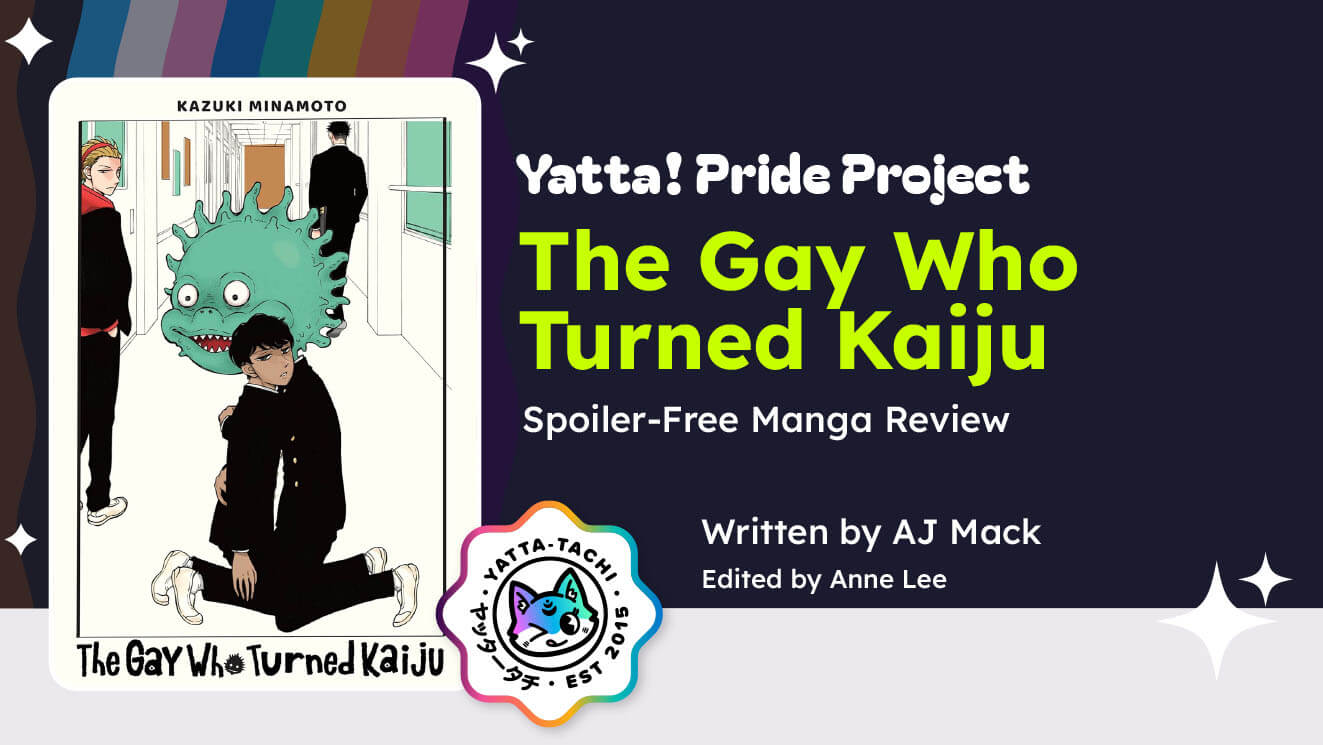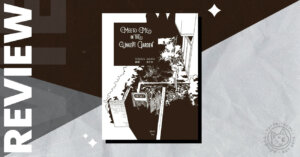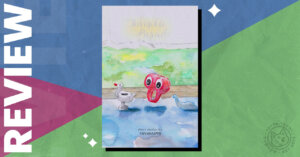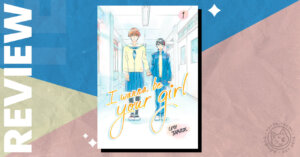Content Warning: Sexual Assault, Suicidal ideation, Attempted Suicide, Homophobia, Colourism, Misogyny, Bullying, Transphobia
Synopsis
Takashi Arashiro is a Japanese teenage boy from the far south who moves to Tokyo. However, he is the only dark-skinned kid in class, and as far as he’s aware, the only gay kid, too. His classmates physically and emotionally abuse him at every opportunity, and at every opportunity, the rest of the school refuses to see what is happening to this outsider. One day, whilst trapped in a toilet cubicle by his tormentors, he wishes to be something else. Straight! A Girl! Anything! But, he wasn’t expecting his wish to be granted in the form of a giant kaiju head. Now, he might stand out more than ever, but at least he has the power to fight back.
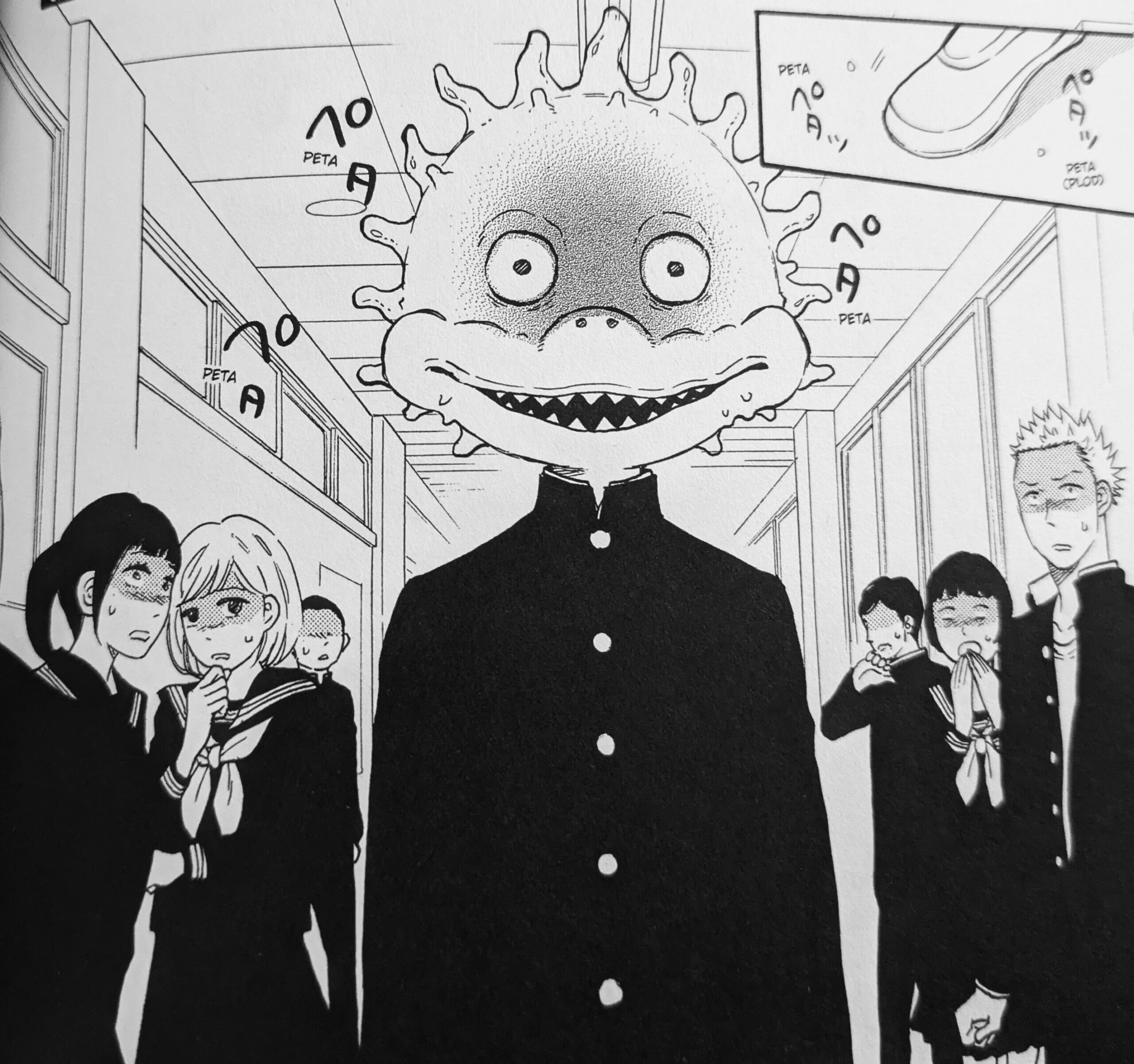
The Good
The fun premise of the story (what if one day you became a kaiju?) quickly gives way to a much bigger discussion about what it means to be gay in a world that seeks to stamp it out of you.
This isn’t a story about love; it’s a story about rage. Arashiro is angry. He’s angry at the world, he’s angry at himself, he’s angry at not being able to express that anger in any real way. And while the story is ultimately about the importance of self-love, it’s more about letting go of the anger inside yourself.
Author Kazuki Minamoto recognizes the importance of love, from romantic love to platonic love and self love. But he also notes the power in letting yourself sit in your anger at the world around you. The world is full of people who hate you for being you, and it’s okay to hate them back. What’s not okay is hating yourself.
In a lot of queer media, characters are able to sit down with their abusers and have them change their perspective to accept their queer selves, but The Gay Who Turned Kaiju presents another story. Arashiro is snarky, he’s rude, and he’s done with everyone’s bullshit. He still doesn’t have the power to say it out loud, but he thinks it so loud you can’t help but relate to him.
Minamoto clearly loves his craft. The manga weaves BL and horror together in a way that brings out the best of both. It’s not a subversion of either per say, it’s a “yes, and…” followed by a “what if…”. It probably fits more into the magical realism genre, but it has the pacing and tension of a horror manga with the art style of a BL. As such, I think it will appeal to fans of both BL and horror, with the magical realism being a cherry on the cake of both.
I was impressed by The Gay Who Turned Kaiju’s dedication to intersectionality. We see the same people who spout homophobic ideology being equally misogynistic — showing how we need to join together to fight our joint enemies. Arashiro is both dark-skinned and gay, and that impacts the way the world responds to him and how he responds to the world. I was also pleased to see the inclusion of a transgender side character and how his story was paralleled by Arashiro’s. In a world where people are trying to remove the T from LGBT, it’s so refreshing to see the assertion that gay and trans people are fighting the same fight. Minamoto doesn’t present a “one size fits all” approach to fighting inequality, but he does show that those who face it should do so together.
![An image of three manga panels with narration over the top. The first is a desk with “gross,” “die,” “go back home,”’ “stay home,” and “filthy dark skin” graffitied on it. The second is a trash can filled with ripped-apart textbooks, workbooks, and school shoes. The third is Arashiro, a dark-skinned teenager, with a mop over his head forcing him downwards into a toilet. He has a sad, resigned, distant expression on his face. His internal monologue reads, “Things… being carved into my desk. My stuff… disappearing when my back is turned. And these games, this bullying… which somehow doesn't count as a crime. This is my life these days.”]](https://yattatachi.com/wp-content/uploads/2025/06/PXL_20250421_1052298683-scaled.jpg)
The Bad
The Gay Who Turned Kaiju is meant to be a little dark. The starting point for this story is the notion of, “If you say I’m a monster, then I guess I’ll become a monster;” one that has appeared in other queer media such as Rocky Horror Picture Show and Camilla. However, the depiction of a gay person sexually assaulting a straight person to prove a point will not sit well with a lot of people. It’s meant to make you uncomfortable, but not everyone wants to feel uncomfortable when reading.
Whilst Arashiro being bullied for the color of his skin is one of the earliest forms of abuse we see in the manga, it’s not addressed nearly as much as his sexuality. The school staff seem more aware and more concerned with him being bullied for his sexuality than his skin tone. However, when he’s turned into a kaiju, his face also changes color, so it’s clearly part of his internalized self-hate. Yet, it is never again properly addressed in the manga except as subtext.
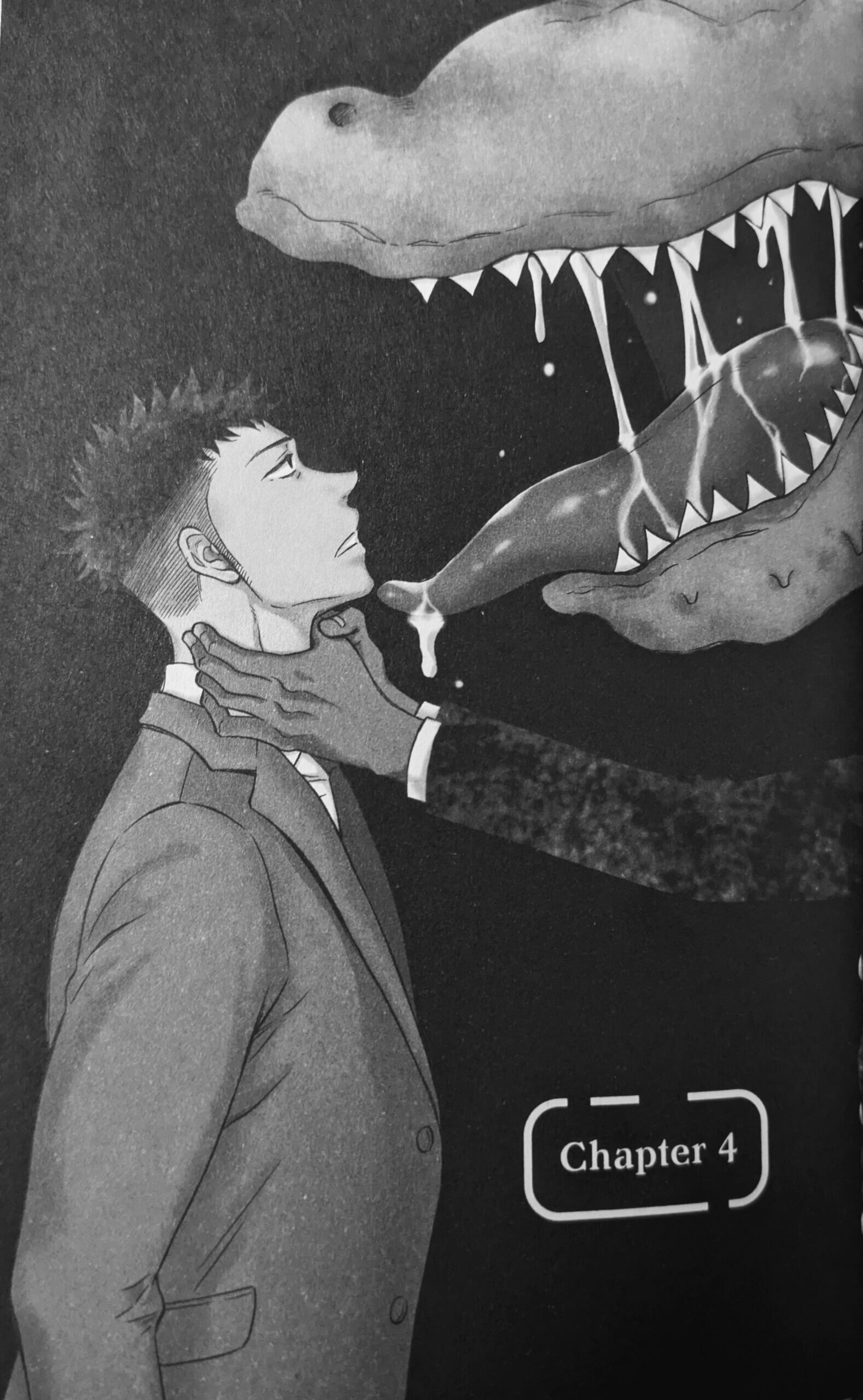
The Verdict
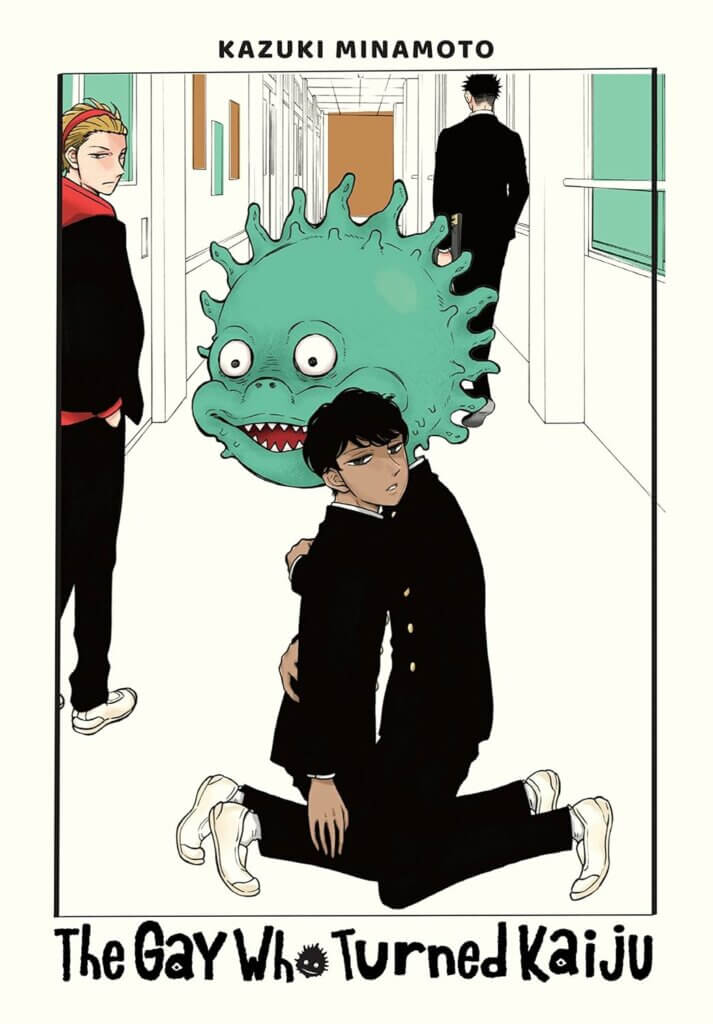
The bittersweet ending might not be for everyone, but Minamoto is playing with the innate queer horror of body dysmorphia, so having an ending that doesn’t end in a perfect utopia is fitting for this type of story. Still, Arashiro is able to find happiness by his own motives and powers, even if that doesn’t look like everyone else’s idea of happiness.
As said before, some of Arashiro’s actions that make him monstrous will not sit comfortably with a lot of readers. But I think this notion of being uncomfortable, of having a bitter and rageful protagonist, is what makes this manga stand out.
The book is like a scream in a forest. It’s not about who can hear you, or what their reaction might be: it’s about letting all those feelings out of you and sod the consequences. In fact, it’s the negative consequences that make it feel worthwhile.
The manga captures the very spirit of “not gay as in happy, but queer as in fuck you.”
I could not recommend it more.
The Gay Who Turned Kaiju is available to buy at Bookshop, Amazon, and Barnes & Noble.
If you liked The Gay Who Turned Kaiju, you might also like…
- Until I Love Myself
Credits
Writer and Artist: Kazuki Minamoto
Translation: Leighann Harvey
Lettering: Carolina Hernandez
Editor: Carl Li
English Edition published by Yen Press
Article edited by: Anne Lee

Featured Sponsor - JAST
The sweetest romance and the darkest corruption, the biggest titles and the indie darlings; for visual novels and eroge, there's nowhere better.
Big thank you to our supporters
From their continous support, we are able to pay our team for their time and hard work on the site.
We have a Thank-You page dedicated to those who help us continue the work that we’ve been doing.
See our thank you page